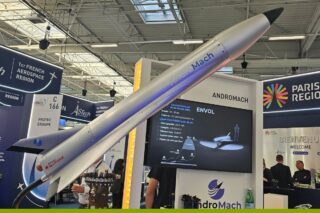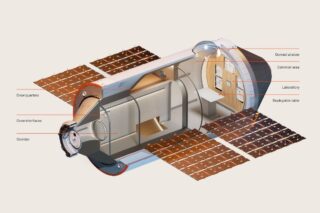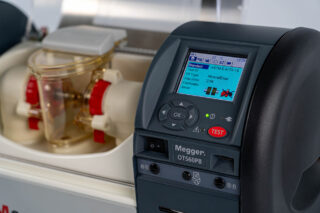Toyota is the official mobility partner for goods and people at the Paris 2024 Olympic and Paralympic Games. The Japanese company has developed and deployed several medical devices for people with reduced mobility. Some of these devices featured prominently during the opening ceremony of the Paralympic Games last night.
Toyota’s commitment to inclusive mobility is evident in the range of solutions they’ve introduced, particularly for athletes and individuals with mobility challenges.
Monica Perez Lobo, Vice President of Corporate Affairs & Sustainability at Toyota Motor Europe, emphasized:
“Today, we know that 1.3 billion people in the world have a serious disability, together with elderly people or others with temporary disabilities losing their mobility and independence. We believe we should try our best to help as many as possible live life to the fullest. In everything we do here at the Paris 2024 Games, from day one, our objective has been to support athletes and their challenges by providing sustainable and inclusive mobility solutions.”
At the Inclusive Mobility Park near the Eiffel Tower, we explored these solutions with Benoît Meunier, Product Manager at Toyota Material Handling (TMH). He gave us a tour of the medical devices for people and athletes with reduced mobility, some of which are already available in Japan and certain European countries.
Watch our video report
1/ The APM (Accessible People Mover)
The APM is an accessible people mover designed to provide last-mile transportation for individuals with accessibility needs. It features a ramp and is tailored for short-distance travel, such as transporting people from the Olympic Village to event venues.
The vehicle is 100% electric and can be driven by individuals with or without disabilities. The driver’s seat can be removed to accommodate a wheelchair, allowing a person with reduced mobility to drive the vehicle. According to Benoît Meunier, the APM is designed to be fully flexible and to assist people in urban mobility.
“We’ve really thought about changing the way urban mobility works. We’re moving away from large vehicles to smaller ones that take up very little space. The advantage of lithium batteries is that they can be placed almost anywhere, allowing us to completely rethink the vehicle’s architecture, maximizing interior space while minimizing external footprint.”
These ultra-compact vehicles can carry up to six able-bodied people or four people with their wheelchairs.
The APM was first deployed in Tokyo in 2021, but Paris 2024 marks its largest deployment. All 250 units were produced in Europe, in Portugal, by Salvador Caetano, a Toyota partner that already manufactures the group’s buses and distributes the group’s forklifts in Portugal.
However, the APM is currently only intended for use during the Olympic Games and is not yet approved for public road use.

2/ Yosh-E: Transforming Wheelchairs into Electric Mobility Solutions
Yosh-E is a traditional mechanical wheelchair converted into a battery-powered electric mobility device. It was featured during the Paralympic Games’ opening ceremony and will appear again at the closing ceremony in early September.
Co-developed by Toyota employees, Yosh-E aims to provide greater freedom of movement for wheelchair users. The device includes a motorized third wheel, similar to a bicycle or scooter wheel, which is equipped with handlebars. This handlebar/wheel combo is attached to the wheelchair, allowing the user to control the vehicle’s speed and direction using the handlebars.
“The further I pull back, the faster I go. Pushing forward slows me down. It’s really simple—push forward to brake, pull back to accelerate, and the further I pull back, the faster I move. If I want to reverse, there’s a small button for that, and for safety, I have to confirm this movement to avoid accidental reverse operation. I can move up to 6 km/h with complete autonomy, and there’s a mechanical brake like on bicycles that I can activate by pushing.”
Yosh-E offers a range of 25 kilometers and can reach speeds of up to 6 km/h.
For the Games, 200 units have been deployed in Paris—50 units are available in the Paralympic Village, and 150 will be used during the opening and closing ceremonies.
Benoît shared that the goal is to make Yosh-E available for rent in cities, similar to bike-sharing systems. Wheelchair users could reserve a Yosh-E through the KINTO app, attach it to their wheelchairs, and navigate the city more easily and quickly.


3/ C+Walk: The Sit-Stand Electric Scooter
C+Walk is an electric scooter that can be used either standing up, for able-bodied individuals, or sitting down, for elderly people or those with mobility issues. These scooters have been available for use in the Olympic Village since the start of the Games and will continue to be available until the end of the Paralympics.
“There is a button to move forward, and it’s just like a regular scooter. I advance, and there’s a brake, so I can slow down. It has an electric brake, so I can move around easily. I’m limited to 4 km/h here. I’ll slow down for safety when turning, but as you can see, it’s very easy to use. The system even slows down when it detects an object in front of me, and to reverse, I can use these small buttons.”
The scooter’s purpose isn’t speed but safety and ease of use. With a maximum speed of 6 km/h, it can be used in pedestrian areas at a walking pace.
The controls are intuitive and can be operated with either the right or left hand using the handlebars.

4/ Genny: The Self-Balancing Micromobility Device
When you see the Genny, it’s hard to tell if it’s a wheelchair, an electric device, or a scooter—and that’s intentional. The design aims to break down stereotypes and barriers associated with disability and mobility through innovation and thoughtful design. The goal is to make the person using the device feel more included in society while enhancing their freedom and mobility. Plus, Genny can be used by anyone, not just those with disabilities.
This device, developed in partnership with Genny, is designed to feel like an extension of your body. It’s essentially a seat on wheels equipped with a steering mechanism, Benoît described:
“When I sit normally, I don’t have to do anything—the system controls forward and backward motion and steering simply by shifting my weight. I manage the direction with the joystick. The first thing to do is find your balance point.”
Once you find your balance point while sitting in the center, the Genny moves according to your body movements. Leaning forward accelerates, leaning backward stops, and staying still keeps the Genny stationary.
Unlike a bicycle, the steering wheel operates horizontally, from side to side. Genny can reach 15 kilometers per hour and is designed to handle various terrains. For instance, in a city like Paris, with its uneven surfaces, Genny makes the journey smoother and more inclusive. Thanks to its large wheels that easily absorb bumps, it can even traverse snow and sand.
“It’s very easy to overcome obstacles. Just let the machine do its job, and it will automatically adjust. I simply shift my balance left or right to stay balanced. The key is that you control the machine’s forward or backward movement with your body, even on ramps. It’s simple and completely intuitive. Now, I’m really used to it; it feels completely natural.”
Genny’s origin traces back to its CEO, Paolo Badano. After using a wheelchair for ten years, Paolo suffered a severe shoulder injury due to prolonged use. One day, he saw a police officer riding a Segway and was inspired. He thought if he could combine Segway technology with a wheelchair, it would significantly improve his life. This led to the creation of the Genny.
The Genny device is available for purchase in France and Italy for €13,000.



Japan, Aging Population, and Woven City
Japan is facing an aging population, and the country has no choice but to turn to technology to adapt. With the growing number of elderly individuals with mobility challenges, there is an increasing demand for inclusive mobility solutions.
READ ALSO
It’s no surprise that Toyota, a Japanese company, is at the forefront of inclusive mobility and was chosen by the IOC for the Games. According to Benoît Meunier:
“This is something that Toyota is incorporating into its developments—thinking about how to work with people with reduced mobility in the future, how to integrate them into transportation systems, and how to ensure they can move around easily. These are the solutions we are offering.”
These solutions will also be deployed in Woven City, a smart mobility city currently being built by Toyota, located two hours from Tokyo.










